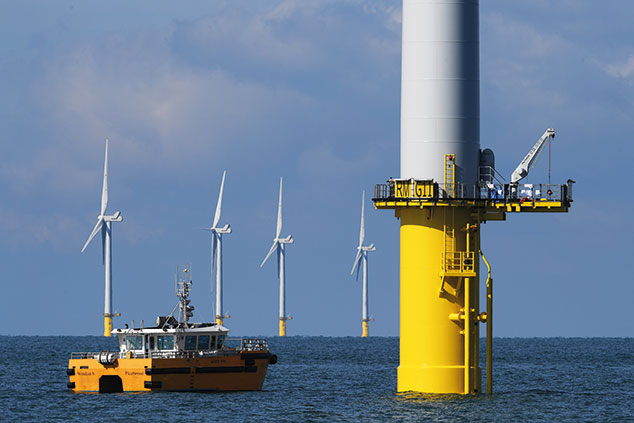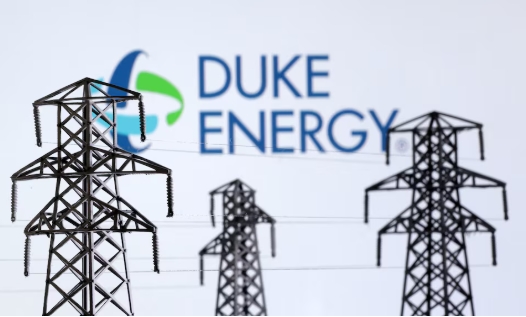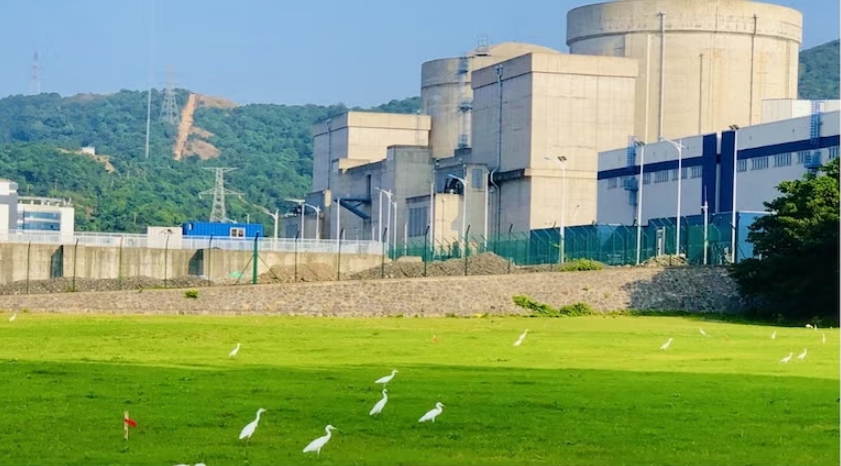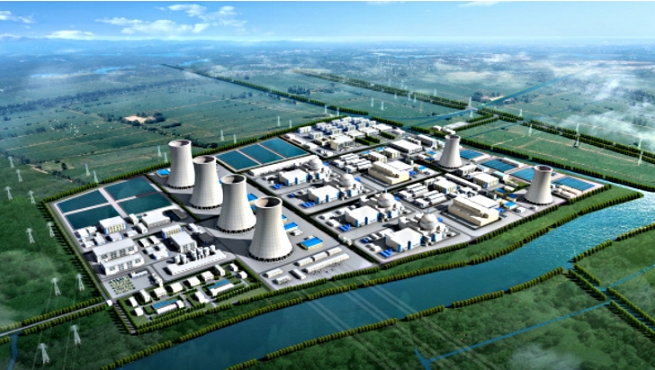
What has happened?
As noisy crowds of Extinction Rebellion protestors marched along Millbank in London last Friday, something quietly momentous was going on round the corner at the UK’s Department for Business, Energy and Industrial Strategy. In an announcement that surprised even the most optimistic advocates of offshore wind power, the government said that it had concluded its latest auction of wind power contracts and subsidies for new windfarms in the North Sea – and had awarded contracts for around 5.8 gigawatts of capacity at prices well below the expected market rate. Indeed, according to analysis by the Carbon Brief website, the new prices are so low that the windfarms could be generating electricity more cheaply than existing gas-fired stations by as early as 2023. That’s a dramatic leap forward for what was once a very expensive way of generating power. As recently as last year, renewables had not been expected to reach this tipping point until around 2030.
How does the auction work?
It’s a system based on contracts for difference, in which the eventual subsidy (if any) payable by the state depends on the future movements in the average wholesale price of electricity. Firms bid to supply electricity based on a fixed “strike price” for each unit of electricity they produce over the first 15 years, thus incentivising investment by guaranteeing steady returns. There’s a further guarantee, too: if wholesale electricity prices are below the strike price, contracted schemes receive the difference as a top-up subsidy. Or, if prices rise above the strike price, they must pay back the difference. The reason last week’s auction was so groundbreaking is that the “strike prices” agreed – which were in a range from £39.65 to £41.61 per megawatt hour – were far lower than analysts had expected, and lower than the current wholesale price of electricity (which has averaged about £50 per MWh this year).
Why is this so exciting?
Because it means that these contracts might well turn out to prove subsidy-free. If so, it will be the first time that has happened, making it a major landmark on the road to zero-carbon and one that suggests the UK’s considerable investment in offshore wind power is paying off handsomely. The 12 schemes awarded contracts last Friday include four vast offshore Dogger Bank windfarms, totalling 5.5GW, plus 0.3GW of onshore windfarms on remote Scottish islands. Together, says Simon Evans of Carbon Brief, they are expected to produce some 29 terawatt hours (TWh) of electricity each year, equal to 9% of the UK’s total output in 2018, and sufficient to power a quarter of the country’s 26 million homes. It’s not definite that these contracts will be subsidy-free: they relate to the years 2023-24, and no one knows for certain now what the wholesale price will be then. But if the market follows the government’s reference price projections, these schemes will not merely be subsidy-free, they will be paying back nearly £600m towards consumer bills by 2027.
How much power does wind produce?
Currently it’s responsible for about 8% of the UK’s electricity generation – a share that is projected to grow to 14% by 2023 and 23% by 2025. To put the latest strike price of under £40 in context, it is only five years since Dong Energy, now Orsted, signed up to build the 1.2 gigawatt Hornsea 1 project at a strike price of £140. By 2017, the guaranteed price for the 1.4 GW Hornsea was down to £57.50. And now it has fallen another 30%. In other words, the scale of UK wind power is ramping up and the price is tumbling. A combination of scaling up, engineering progress, and growing investor confidence in the nascent technology has driven down costs, and turned the UK into the biggest offshore wind market in the world. It currently produces 8GW of capacity, a third more than Germany (but will soon be overtaken by China).
And government support has helped?
Indeed. Britain has natural advantages when it comes to offshore wind power, principally the fact that the North Sea is windy and relatively shallow (the vast Dogger Bank is only 15 metres deep in places). But successive governments deserve credit for taking the initiative, says The Economist. In 2008, the Climate Change Act – which set a target of a 90% reduction in carbon emissions from 1990 levels by 2050 – boosted Britain’s push into renewables. And in 2013 the government authorised the system of subsidised 15-year contracts that has proved so successful, and attracted massive inward investment from the likes of Germany’s Siemens and Denmark’s Orsted. Overall, offshore capacity has grown 20-fold in a decade, and by 2030 it should have capacity of 30 GW, far ahead of Germany, the US, Japan and Denmark.
What about the long term?
An expansion to 30 GW would already make wind the backbone of our power system. It seems likely, says Ambrose Evans-Pritchard in The Daily Telegraph, that this target will be increased, to 35GW or more, following the outcome of the latest auction, and that the case for expensive nuclear power will grow ever thinner. If the UK can consolidate its position as the world leader in wind power, the government’s long-range target of 75GW by mid-century starts to look achievable. At that point, Britain would be self-sufficient in electricity, with some to spare for another key zero-carbon innovation – the production of “green” hydrogen, via electrolysis, for use as fuel. That raises the prospect of Britain as a “major supplier of power to Europe’s industrial core and green hydrogen worldwide”, says Evans-Pritchard. The UK is “very close to cracking the electricity challenge and therefore also close to cracking zero-carbon power for electric vehicles and rail transport at low cost. Rejoice.”







